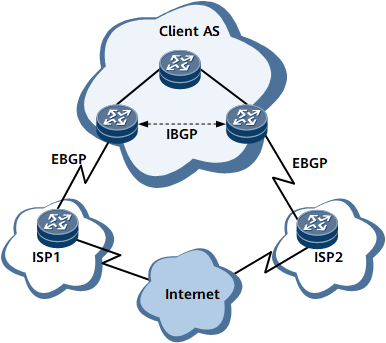Overview of BGP4+
BGP4+ controls route advertisement and selects optimal routes.
BGP4+ Definition
As a dynamic routing protocol used between ASs, BGP4+ is an extension of BGP.
Traditional BGP4 manages IPv4 routing information but does not support the inter-AS transmission of packets encapsulated by other network layer protocols (such as IPv6).
To support IPv6, BGP4 must have the additional ability to associate an IPv6 protocol with the next hop information and network layer reachable information (NLRI).
Two NLRI attributes that were introduced to BGP4+ are as follows:
Multiprotocol Reachable NLRI (MP_REACH_NLRI): carries the set of reachable destinations and the next hop information used for packet forwarding.
Multiprotocol Unreachable NLRI (MP_UNREACH_NLRI): carries the set of unreachable destinations.
The Next_Hop attribute in BGP4+ is in the format of an IPv6 address, which can be either a globally unique IPv6 address or a next hop link-local address.
Using multiple protocol extensions of BGP4, BGP4+ is applicable to IPv6 networks without changing the messaging and routing mechanisms of BGP4.
Purpose
BGP transmits route information between ASs. It, however, is not required in all scenarios.
BGP is required in the following scenarios:
On the network shown in Figure 1, users need to be connected to two or more ISPs. The ISPs need to provide all or part of the Internet routes for the users. Routers, therefore, need to select the optimal route through the AS of an ISP to the destination based on the attributes carried in BGP routes.
The AS_Path attribute needs to be transmitted between users in different organizations.
Users need to transmit VPN routes through a Layer 3 VPN. For details, see the HUAWEI NetEngine 8000 F Series Feature Description - VPN.
Users need to transmit multicast routes and construct a multicast topology. For details, see the HUAWEI NetEngine 8000 F Series Feature Description - IP Multicast.
BGP is not required in the following scenarios:
